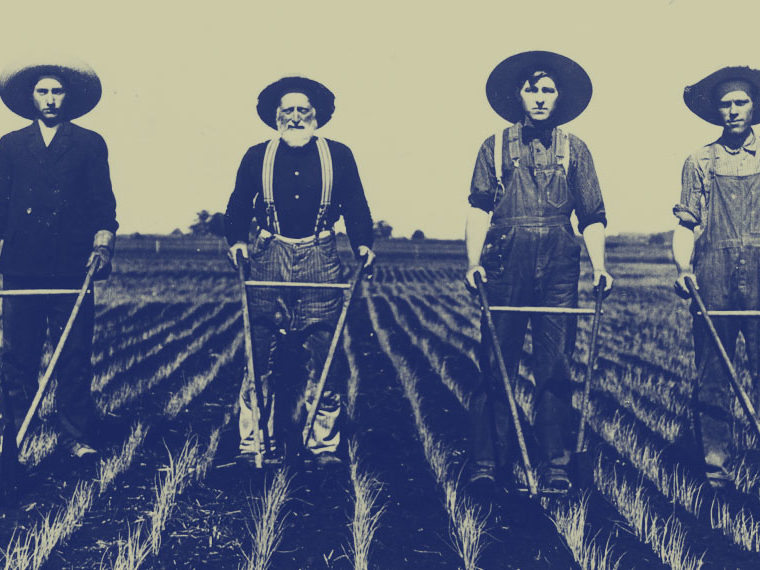A practical guide to enlisting, mobilizing and continually engaging like-minded people
Activism has made a comeback in America, with organized protesters demonstrating a level of zeal and outrage rarely seen here since the 1960s. Students are marching for gun restrictions, gun rights supporters are rallying in opposition, teachers are closing school districts over funding, and the #MeToo movement is routinely outing workplace sex offenders. Protections for children of immigrants, higher hourly wages, abortion legislation, clean energy policies — these and other social causes are uniting millions of Americans in 2018.
What drives individuals to come together in these often selfless, sometimes risky acts of collective campaigning? To get these movements going for lasting social change, large numbers of individuals must unite publicly, with strangers, over grievances that may not even affect them directly. Organizers must tap into the motivations that convince people to take such actions for the greater good.
A review of literature on the subject might help actuate these causes, whatever their issues or slants. “Social Mobilization” by Harvard’s Todd Rogers and UCLA Anderson’s Noah Goldstein and Craig Fox appears in the 2018 edition of Annual Review of Psychology. With evidence from more than 100 research papers involving field studies from behavioral sciences, the paper identifies key principles used in effective movements. The authors cite examples of organizations that successfully applied these principles to recent causes, such as get-out-the-vote and energy conservation campaigns.
Opt In to the Review Monthly Email Update.
The result is a sort of field guide to bringing people together, and keeping them engaged, for a common cause. As organizers seek to make outraged masses effective reformers for gun restrictions, a $15 minimum wage or any other hard social change, this article offers practical guidance.
Triggering Altruism
Why does anyone put time, energy and emotion into a social cause? On an individual basis, the risk or inconvenience of joining a movement often outweighs the personal benefit from whatever change is sought. For example, many Egyptian citizens protesting for government overthrow in 2011 were leading comfortable lives under the current regime, but they risked jail time or worse by rallying. Toyota Prius buyers in 2007 paid up for an unproven hybrid electric car, even as reviewers voiced concerns about its substandard power and potentially low resale value. Raising money to feed hungry people on another continent does little or nothing for the individual who solicits donations for the cause.
Yet the changes these people hoped to see — fairer government, a healthier environment, an end to starvation — could only be achieved by many individuals’ acting at least somewhat selflessly for the collective good. Recycling, eating vegan, boycotting a retailer, voting in government elections and many other conscientious activities are essentially meaningless when practiced individually, but they benefit the collective when performed en masse. To make student speeches and public rallies ultimately effective for social change, organizers must continually motivate many individuals to take personally costly actions for the greater cause.
Rogers, Goldstein and Fox distill evidence from field studies on topics that range from voter mobilization to energy conservation to promoting charitable giving in order to identify strategies most likely to elicit these altruistic commitments. They summarize their findings into five organizing strategies — they call them “social mobilization principles” — that make social change efforts particularly effective.
Mobilizing for social change — how to motivate supporters and win over outsiders
Whether marching for gun control, rallying for a government take-down or campaigning for votes, practicing these principles can increase chances of success.
- Personalize the experience
- Volunteers are more effective when they have personal interactions with target audiences, beneficiaries and their like-minded activists.
- Carry the message in person. A face-to-face discussion is more likely to create a supporter than a phone call or email. Introduce volunteers to beneficiaries of the cause. Gather the believers in rallies and marches; they allow supporters to bond over their shared beliefs while speaking in one voice to outsiders.
- Make it reputational
- People are more likely to engage in selfless activity when they think others will notice.
- Increase expectations that participation (or avoidance) of a desired behavior will be observable. Turnout for elections rose dramatically when potential voters were told that names of participants would be published. Household energy use declined when residents thought conservation experts would track their consumption.
- Promote the goal as the norm
- Social mobilization is more effective when the desired behavior is the socially acceptable norm. People want to behave in ways others like themselves expect.
- Emphasize similarities between the target audience and people already on board with the cause. Tap into social norms outside of the cause, such as the feeling that one should reciprocate kind gestures. Providing unconditional gifts — individualized address labels in a solicitation for donations, for example — has been shown to ramp up support.
- Promote self-actualization
- People are more likely to support causes that speak to their own self identities, such as good mother, moral person, politically engaged citizen or conscientious consumer.
- Label would-be supporters with traits that appeal to their self images, or ask them whether they will perform a specific task that aligns. Survey participants who were randomly labeled as “above average citizens” for their likeliness to vote actually voted at far higher rates than others. Hotel guest were more likely to reuse towels when asked if they would do so in advance.
- Leverage social connections
- People are more likely to support a cause if they know someone already involved. Knowing numerous participants makes joining even more likely.
- Target high profile individuals to tap into the numerous people they touch, but also seek out the connections of less ardent or less influential supporters. An analysis of protest calls on Twitter during the Arab Spring found that they created more activity the following day when coordinated by moderate regional activists than when solicited by the best known organizers.
A Smiley Face Wins Friends
People want to belong, to be well-regarded by others and to see themselves as positive contributors to social groups, according to the research the authors reviewed. The social mobilization strategies that work over and over again in studies, the authors find, tap into these hard-wired desires on multiple fronts. The principles they describe offer hints on how to do it.
First, interventions tend to be more successful when they are more personal. Face-to-face solicitation, for example, is far more effective at gathering support for a cause than calling or writing people. That finding generally held up in numerous field experiments focused on get-out the vote campaigns, the authors note. Mailed encouragements to vote had little effect on turnout. Door-to-door canvassing is about 150 percent as effective as making phone calls, studies find.
But adding an element of accountability to the effort ratchets up participation even when face-to-face encounters aren’t possible. A mailing stating that names of voters will be published post-election increases voter turnout substantially, especially if friends and neighbors are likely to view the results. Simply telling people someone will call afterward to ask if they voted also boosts voting.
Strategies that make a desired behavior seem like the accepted norm can raise support for a cause, though they can also backfire under some conditions, according to studies the authors cite. For instance, a program to reduce residential energy use in a California community found that offering homeowners evidence of their energy use versus the community average didn’t change overall usage significantly. Households with above average usage reduced their consumption, but lower-use households increased consumption. The good news is that adding a smiley face next to the homeowner’s figure when it was below average made them less likely to increase consumption, because this reminded them of a counterveiling norm that they ought to consume less energy.
Opower, a company that runs energy conservation programs, has leveraged a mixture of normative and identity-relevant strategies to achieve significant and long-lasting consumption reductions in household energy use, according to studies the authors reviewed.
In one California program, the company added judgments to the notifications. Individual household usage was compared to “efficient neighbors,” as well as “all neighbors.” The notice also came with a grade: “Your efficiency status: below average” (or good, or great, for example). These qualifiers increased support, perhaps because they triggered desires to join an admirable group and offered ways that individuals could reaffirm their self-identities as good people. Similar feedback has been effective in water conservation efforts and campaigns to reduce overprescription of antibiotics.
Highlighting a sense of threat to a broad group of people, even if not united by a specific grievance, also can ramp up participation in a movement, according to the review. Millions of women participated in the 2017 Women’s March, for example, for a lot of different reasons, such as fear of losing reproductive rights and outrage over Donald Trump’s vulgar comments about groping a woman. The title of the movement tapped into a common identity, and it offered participants a chance to be more strongly connected with others in their group by defending it.
Connections within groups can turn into particularly effective forces for social mobilization when the actions of individuals are made visible to the group. In one study, Facebook users were encouraged to vote and were allowed to click on an “I Voted” button to display on their page when they did. This group did not change its voting habits.
However, when pictures of friends who already clicked “I Voted” were included with the encouragements, the targets were more likely to actually cast a ballot. (Whether or not one votes in any particular election is public record.) Moreover, their friends who were not involved in the study also were more likely to vote. The power of the known connections was expanded to include thousands of others.
Rogers, Goldstein and Fox do not delve into the moral emotions that initially draw individuals to one particular cause or another, although they note that feelings such as empathic anger and existential guilt are important motivators. They found little field research on the direct role of emotions that would be useful to organizers.
Rather, many of the strategies here offer opportunities for individuals to fulfill, for the common good, some universal needs: to see oneself in a positive light; and to feel connected to, and respected by, other good people.
Featured Faculty
-
Noah J. Goldstein
Bing (’86) and Alice Liu Yang Endowed Term Chair in Teaching Excellence; Professor of Management and Organizations; Faculty Advisor, Equity, Diversity and Inclusion
-
Craig Fox
Harold Williams Chair and Professor of Management
About the Research
Rogers, T., Goldstein, N., & Fox, C.R. (2018). Social mobilization. Annual Review of Psychology, 69, 357-381. doi: 10.1146/annurev-psych-122414-033718
Meeker, D., Linder, J.A., Fox, C.R., Friedberg, M.W., Persell, S.D., Goldstein, N.J., Knight, T.K., Hay, J.W., & Doctor, J.N. (2016). Effect of behavioral interventions on inappropriate antibiotic prescribing among primary care practices: A randomized clinical trial. JAMA, 315(6), 562-570. doi: 10.1001/jama.2016.0275






